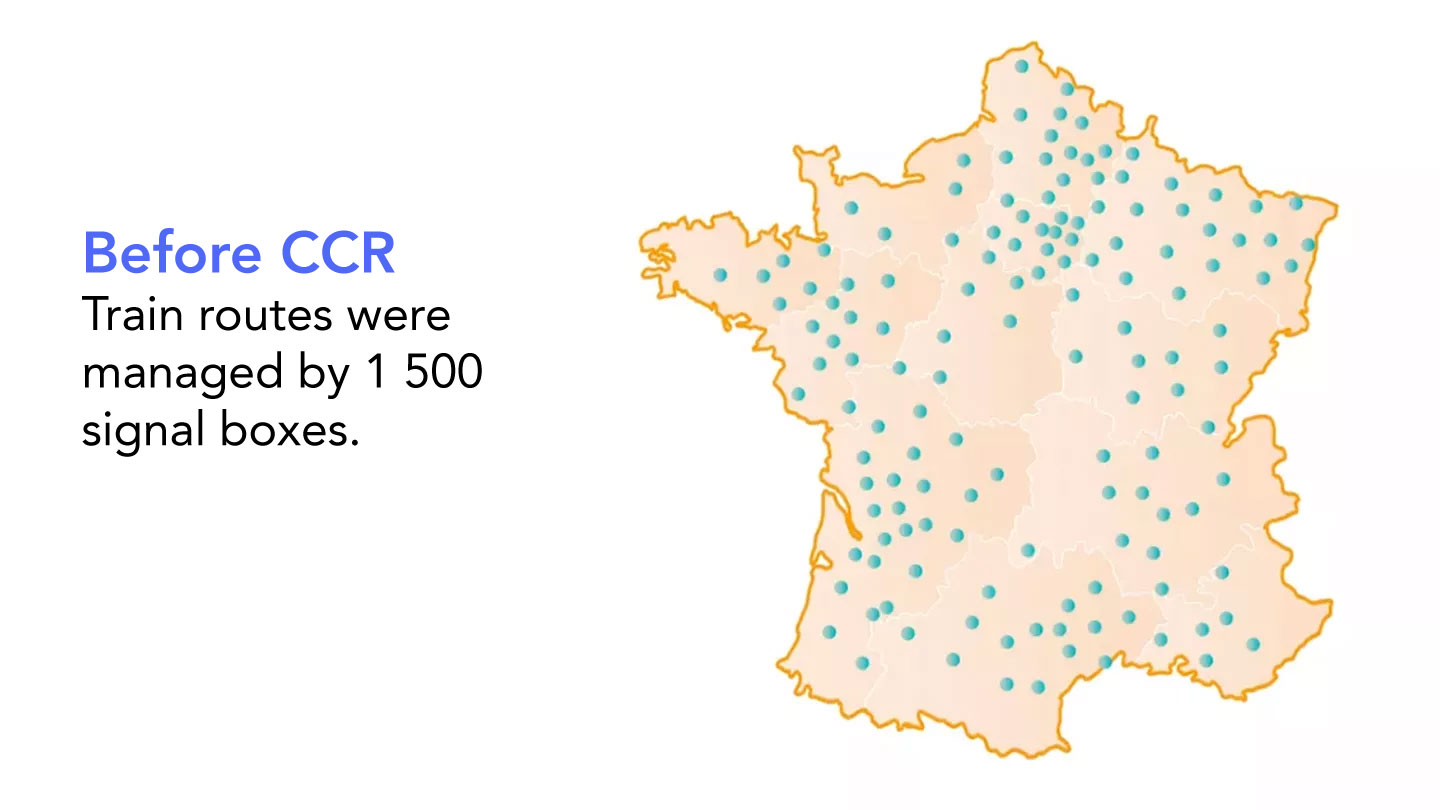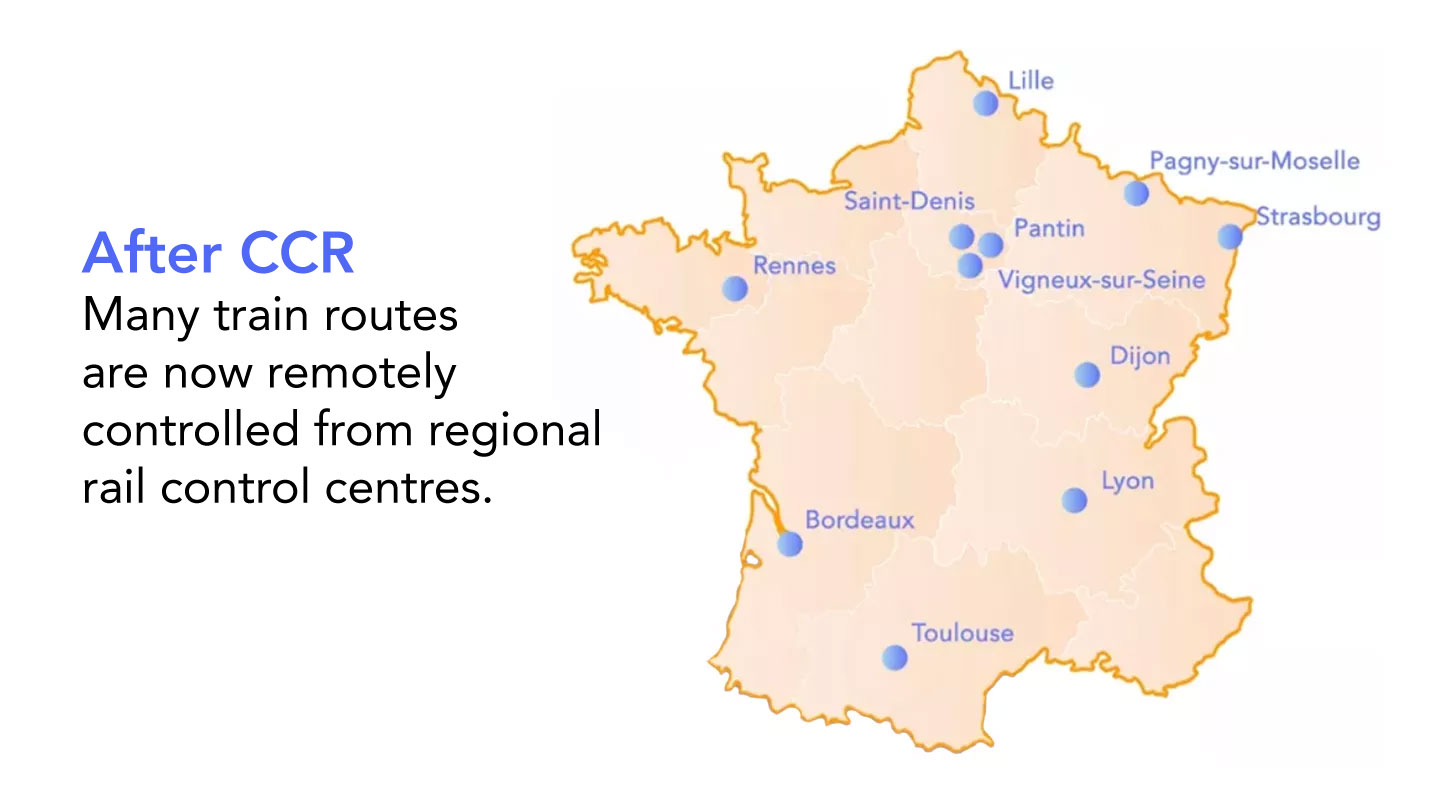A technological leap forward
SNCF Réseau manages train traffic across more than 28,000 km of track. Launched in 2011, our Centralised Network Control (CCR) programme aims to digitise and centralise traffic management via regional control towers.
In the past, traffic was managed by signal operators working in 1,500 signal boxes distributed across the main network. With CCR, the oldest of these—using mechanical and electrical technologies—are gradually being replaced with computer-based systems that are remotely operated from regional towers. Teams are transitioning from manually setting points using mechanical levers to programming train routes digitally. Eventually, all signal boxes will be connected to regional centralised control centres.



